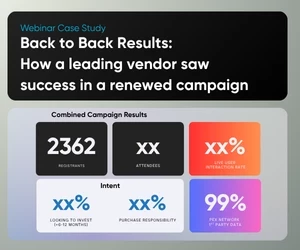Mapping a path for process management professionals
There are many roads that lead to a career in process management
Add bookmark
In 2023, the American Productivity & Quality Center (APQC) conducted the People of Process Management survey to gain insight on the practitioners who support process management work, their organizations’ reporting structures, roles and governance and the outlook for skills and career paths in the process field.
The insights were revealing, with 40 percent of respondents stating they didn’t have a clear path of advancement at their current organization. Despite the vast amount of process management experience represented across respondents, most only stayed in their current role for three years or less.
This data, along with insights from APQC’s 2024 How Process Programs Stack Up, highlight the need for organizations to better define roles, desired skill sets and potential career paths if they want to retain their process talent and develop them to meet anticipated organizational goals and challenges.
Join the PEX Network community

Don't miss any news, updates or insider tips from PEX Network by getting them delivered to your inbox. Sign up to our newsletter and join our community of experts.
Learn MoreHow organizations structure process management
To think about how an organization can more clearly map an advancement path for process professionals, it helps to start with the big picture of how process management is structured. APQC categorizes this organizational structure as being centralized, decentralized, federated or ad hoc:
- Centralized process work is managed through a process management department or a center of excellence (CoE). Centralized management provides strategic alignment, governance and accountability and a consistent communication and implementation plan for business process management (BPM) efforts.
- Decentralized process staff are embedded within different departments, which helps facilitate the adoption of new behaviors, processes and responsibilities.
- Federated structures provide a hybrid solution, combining a centralized governing body plus embedded BPM staff within the business.
- Ad hoc teams are sometimes used by organizations that have no defined program structure. APQC does not recommend dealing with process problems on an ad hoc basis. Not only does this approach lack standardized measures and controls, but it also invites the potential for duplication of effort, unintended impacts on other business processes and discordant technology investments.
Which structure is best?
Each of the structured approaches provides unique advantages and challenges that organizations should evaluate when deciding how to position process roles.
The pros of a centralized structure include one-stop shopping for process tools and methodologies, a clear point of contact for all things processes and a structure that is suited for aligning process work with organizational strategy. The challenge of centralization is that it is harder to scale and requires a more focused change management strategy to engage the rest of the business.
Conversely, a decentralized structure promotes employee buy-in and engagement into BPM initiatives, since subject matter expertise is directly embedded in the work. However, it lacks the end-to-end view of a more centralized structure and tends to reinforce business silos and duplication of effort.
A federated structure can combine the best of both worlds, wedding the holistic view and resources of a centralized process department along with localized, business-level engagement of staff and more easily scalable resources. However, organizations using this hybrid method still need to be mindful of the potential for ad hoc or siloed efforts. This approach will also require more management effort to coordinate across the enterprise.
Ekaterina 'Katie' Curry, Millennial Specialty Insurance, and Donald Kuk, formerly of BNY Mellon, discuss BPM
Key process roles
Along with organizational structure, governance and roles provide the framework for leveraging process talent and managing process efforts with accountability, sponsorship and oversight. APQC research provides insight into the best practices that ensure roles and governance are in place to support process improvement efforts. We find that the most common and effective role structure includes a dedicated BPM function, process management roles embedded in the business and a steering committee to provide guidance and facilitation.

Process roles and governance structure
How many organizations are implementing these roles? The How Process Programs Stack Up survey showed that 75 percent designate process owners and over half employ improvement specialists to execute the work.
The number of organizations APQC surveyed that appoint senior-level strategic roles has increased over the past five years. In 2024, around 40 percent leverage process sponsors, process champions and/or steering committees. This is an important development, as these strategic roles help set direction, align process efforts with organizational goals and ensure grass-roots support and adoption of transformation initiatives.
Career paths for the process management professional
The People of Process Management study revealed that the majority of process professionals have extensive (at least 10 years) experience but move positions frequently. Most process people stay in their position less than three years and stay at one organization for three to five years.
When asked how they envision the future of their roles in process management, more than half said that they have a clear path forward, but 40 percent felt there was little or no clear advancement path at their organization. Most of the latter group felt that either their organization did not value processes or there was no clear next step for them related to processes at their current employer.
Why process management?
Despite the uncertainty for many, 75 percent of process professionals surveyed anticipate that they will stay in the process management field. When asked about their preferred next role, many survey respondents hoped to move into management (31 percent) or consulting (16 percent). Another 16 percent stated plans to stay in their same position, while only 3 percent said they plan to leave process management altogether.
There are many roads that lead to a career in processes, but the underlying motivation for the vast majority of process experts is a drive to make things better by developing staff, understanding and improving business processes and implementing process management structures.
Other frequently mentioned factors for seeking out or landing in a process role include:
- The job provides a natural fit with abilities and interests.
- Experience and competencies lead people to “default into” the role.
- The role itself provides desired benefits or enables career advancement.
Blake Hill, AccentCare, shares his thoughts on building high performance teams
Core skills and future outlook
Another aim of the People of Process study was to understand the core competencies for process professionals, both now and in the future. The survey presented a list of 26 skills and asked respondents to identify the ones they believe they currently possess as well as those they need to develop in the near term. These competencies can be grouped into three categories:
- Deep work: The ability to understand complex inputs, creativity and critical thinking.
- Social and soft skills: The interpersonal and communication proficiencies needed to interact with others.
- Technical expertise: The trainable, tactical know-how necessary to execute methodologies, projects and tasks.
Top five current process skills
The following five core competencies were ranked highest by process professionals:
- Flexibility (83 percent): Considered a deep work competency, flexibility in adjusting to new demands and solving problems creatively allows process professionals to support organizational agility and adapt to today’s rapidly changing business environment.
- Active listening (82 percent): For process efforts to be successful, practitioners must be able to both listen to and interpret discussions with stakeholders. Someone proficient in this skill would be practiced in the art of observing nonverbal cues and confirming understanding. Active listening is an example of a soft skill that process professionals can use to gain the trust and buy-in necessary to move their projects forward.
- Communications (82 percent): General communication skills are critical for process work because process thinking does not come naturally to most people. Process professionals must be able to clearly articulate the value of their work across all levels of the organization. Process work also typically involves multiple teams and business areas. Process people are often called upon to “play translator” and act as intermediary in communicating and negotiating between groups. What’s more, process documentation must be clear, comprehensive and easy to understand. Even when a business unit is creating its own documentation, the process team is often called upon to provide writing and editing support.
- Process management (78 percent): The technical skillset of the process management discipline refers to the numerous process management approaches and methodologies, including Lean/Six Sigma, process frameworks like APQC’s Process Classification Framework® and a wealth of process modeling tools and techniques such as flowcharts and role activity diagrams. These tools require a level of technical competency that allows process pros to understand and select the appropriate approach and then explain and apply these methods.
- Critical thinking (77 percent): Another deep work competency, critical thinking was cited by many as essential to process work. High-level critical analysis is required to break a process problem down into its components, trace the impact on related processes and develop solutions that provide the most positive impact for the entire organization.
Top five process skills to develop for the future
When asked which skills they most needed to develop in the next 18months, process professionals overwhelming prioritized technical skills:
- Artificial intelligence (AI)/chatbots (56 percent): While AI cannot replace deep, creative thinking, it can help automate processes. The majority of process professionals surveyed believe they need to develop their knowledge of AI tools.
- Process automation/robotic process automation (RPA) (51 percent): Initially focused on manufacturing, marketing and call centers, automation tools have evolved to provide greater productivity and stakeholder satisfaction to high-value and high-risk areas like finance and HR.
- Human-centric design (45 percent): Human-centric design involves applying design thinking techniques such as ethnography, observation, interviews, immersion and guiding concepts to develop solutions people will actually use. Design thinking links unknown or intangible needs of the internal or external customer with the organization’s capabilities to provide optimal customer value.
- Lean/Six Sigma management (39 percent): Process improvement is best paired with process management methodologies to optimize the results without unintended harm to other groups in an organization. Lean and Six Sigma are two process improvement methodologies that provide an overarching perspective that BPM experts can use to streamline their approach.
- Technology fluency (39 percent): Process professionals believe that an overall awareness of and ability to understand and apply emerging technologies can enable them to help their organizations invest in digital solutions that provide competitive advantage.
Key takeaways
To retain process professionals and prepare them to handle the rapidly changing business and technological landscape, organizations should:
- Identify how process work is structured – whether centralized, decentralized or some combination of the two – and evaluate whether the necessary roles and governance are in place to support process expertise at every level.
- Clearly define these roles and potential career paths for process talent, with an emphasis on how future positions might align with process professionals’ innate desire to effect change, improve processes and utilize their communication skills.
- Offer appropriate opportunities for growth in skills that address organizational development needs as well as individual learning goals, particularly technical and digital skills.
Watch Madison Lundquist discuss building and measuring effective process programs
All Access: Future of BPM 2026

You asked, and we listened. Business process management (BPM) remains the cornerstone technology for driving organizational transformation, according to the survey results featured in the latest PEX Report. As we look toward 2026 and beyond, generative AI, agentic AI, and intelligent process orchestration are redefining how processes are designed, executed, and optimized. BPM is your key to adapting swiftly and effectively in this new era.
PEX Network is bringing together industry leaders, technology innovators, and thought leaders to answer your biggest questions and explore the advancements reshaping business today. And you're invited. Register for free to save your spot now!
Register Now



















